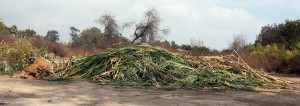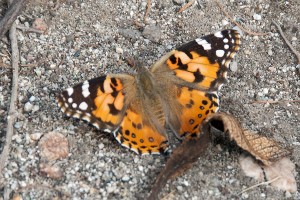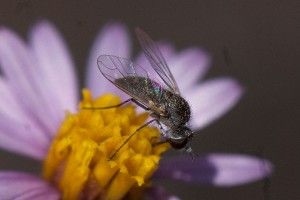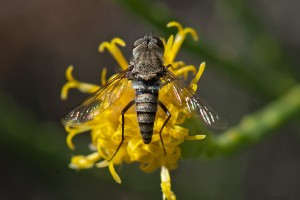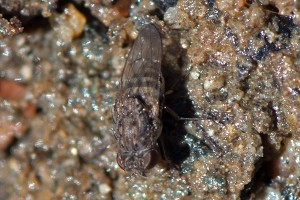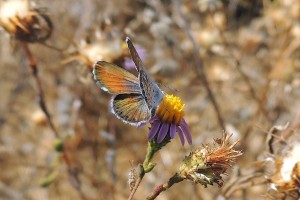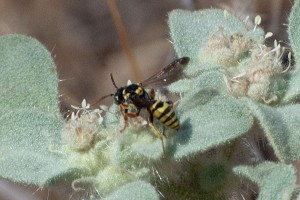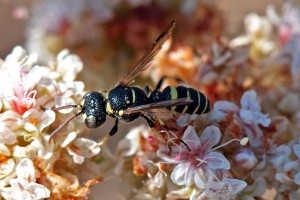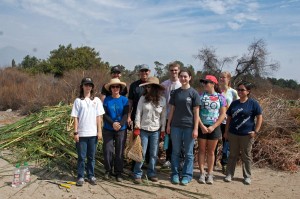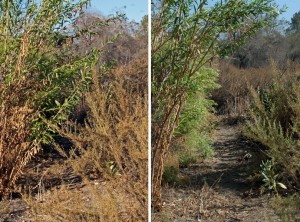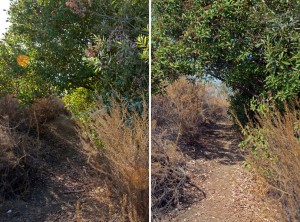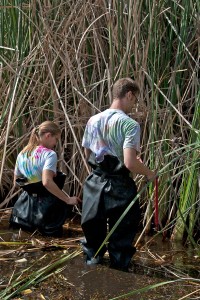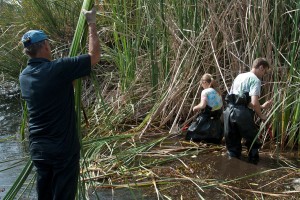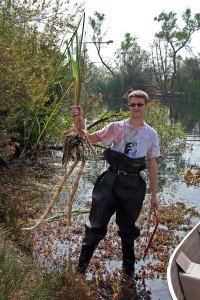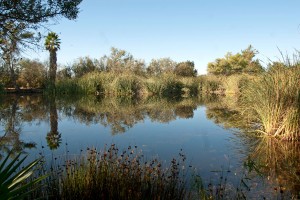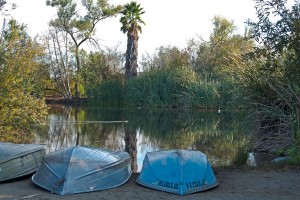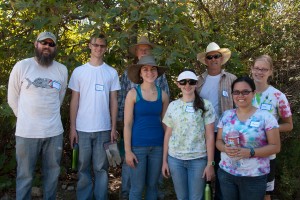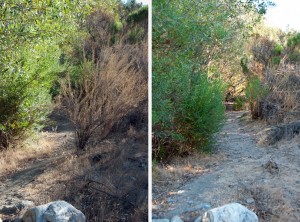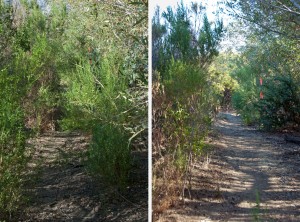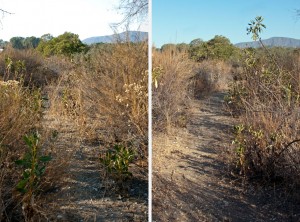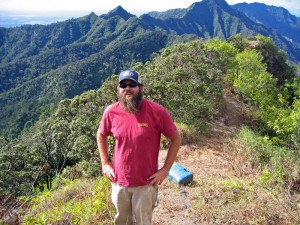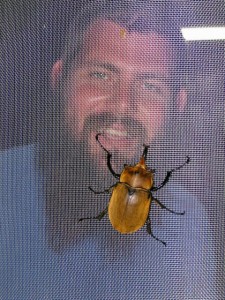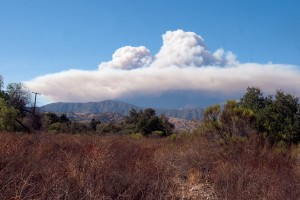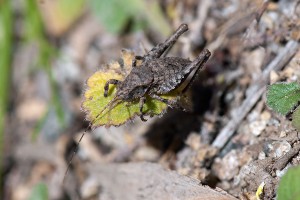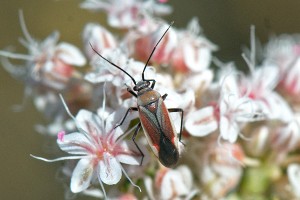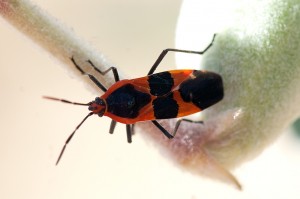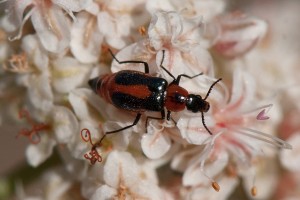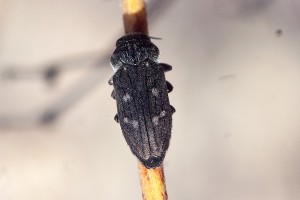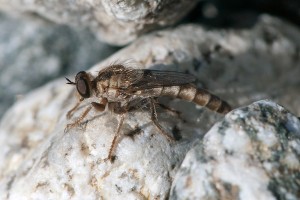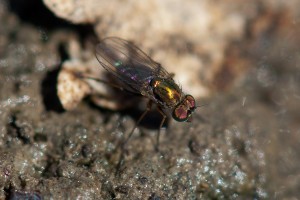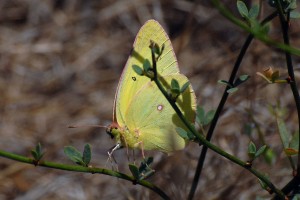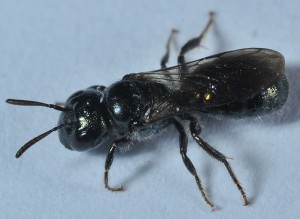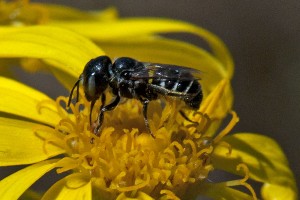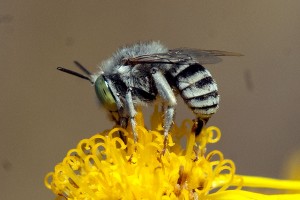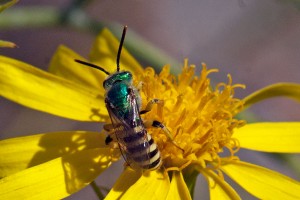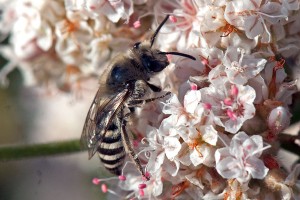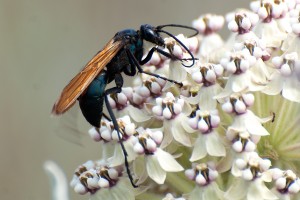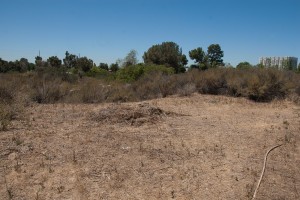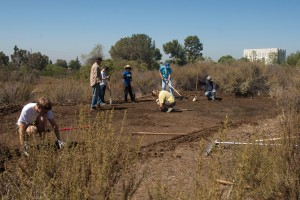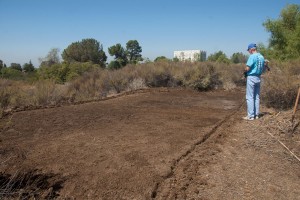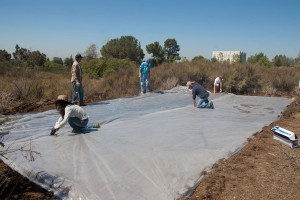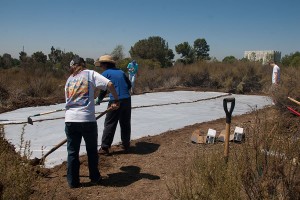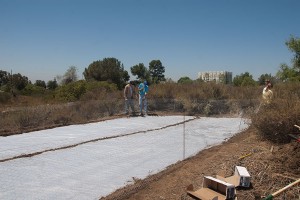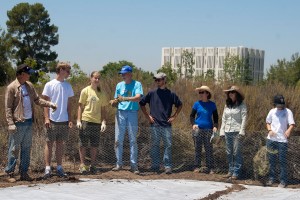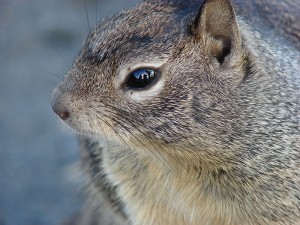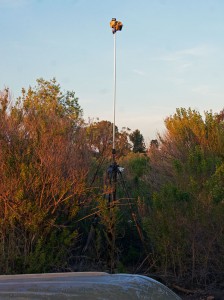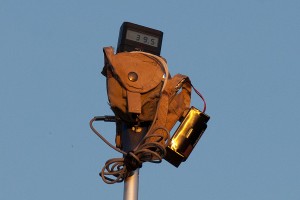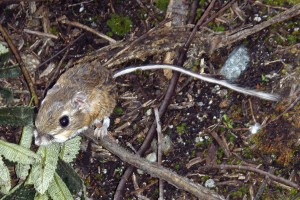This past Saturday, a group of hardy volunteers turned out on a cool, misty day to complete the cattail clearing at pHake Lake. Our main target for the day was “south beach”, a supposedly open area on the south shore of the lake used by many classes. So everyone was in the water or in boats to whack the cattails.
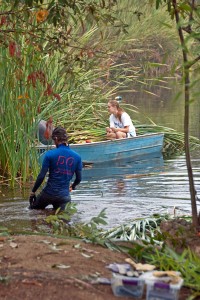
Bryan Visser (HMC ’13, in boat) and Elliott Cox (in water) cut cattails on the south shore, while Anne Clark (HMC ’13) collects them in the boat. ©Nancy Hamlett.
The workday was very successful, as you can see in the “before” and “after photos below. You can actually see “South Beach” now!
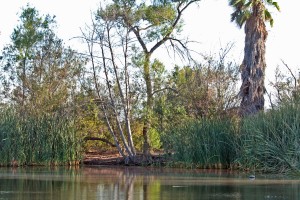
Before: The “south beach” of pHake Lake almost completely obscured by cattails. Orange landscape paint marks the cattails targeted for removal. ©Nancy Hamlett.
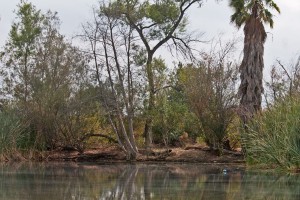
After: The “south beach” of pHake Lake after cattail removal. Wow – what difference! ©Nancy Hamlett.
The volunteers also spent some time clearing excess vegetation from the little island that’s the home for our colony of native ground-nesting bees Anthophora pacifica to create a sunnier habitat, which the bees prefer. The island was cleared in 2009, and over the past few years vegetation had regrown, creating considerable shade.
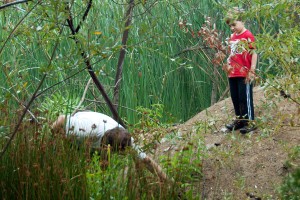
A junior supervisor oversees Prof. David Harris (HMC) clearing excess vegetation from the bee island. ©Nancy Hamlett.
It was a busy day at the BFS! Not only were volunteers clearing cattails and other vegetation from the lake, but also the Harvey Mudd engineering group working with the autonomous underwater vehicle (AUV) was conducting testing in the lake, and two other research groups studying soil composition and carbon storage were sampling their plots.
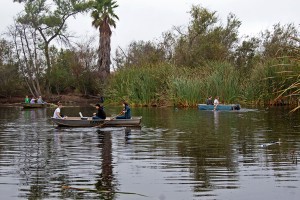
A busy day at the lake! In the background one group of volunteers rows a bunch of cut cattails from south beach over to the boat landing while another heads back to cut another bunch of cattails. In the foreground AUV researchers Taylor Peterson (HMC ’15), Yukun Lin (HMC ’15), and Hannah Chasten (HMC ’13) control and monitor the AUV with their laptop. ©Nancy Hamlett.
It was hard work, and everyone was wet and dirty at the end of the day …
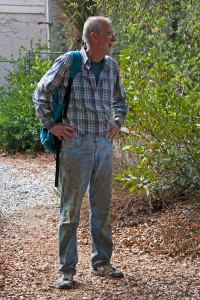
It’s a dirty job, but someone has to do it! Prof. Dick Haskell (HMC) at the end of the workday. ©Nancy Hamlett.
… and ready to head back to the outdoor classroom for some pizza.
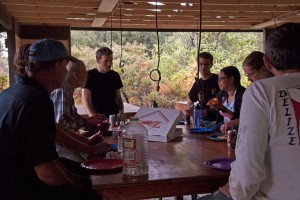
The volunteers and the soil researchers enjoy pizza. Around the table, starting left: Tim Cox, Elliott Cox, Prof. Colin Robins (Keck Science), Bryan Visser (HMC ’13), Maria Morabe (HMC ’13), Anne Clark (HMC ’13), and BFS Director Marty Meyer. ©Nancy Hamlett.
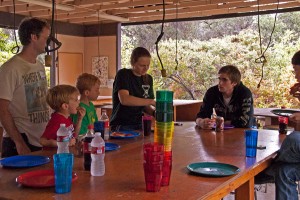
The volunteers and the AUV research team enjoy pizza. Adults round the table, starting from left: Prof. David Harris (HMC), Hannah Chasten (HMC ’13), Taylor Peterson (HMC ’15), and Yukun Lin (HMC ’15). ©Nancy Hamlett.
After the volunteers had left, the sun came out briefly to light up the pile of cattails collected over the past two volunteer workdays …
… and a couple of Painted Ladies in the trail next to the pile.
This was the last day of cattail removal for this year! Please join us on the next workday, Nov. 3, for work on dry land, removing Trees-of-Heaven and trimming oaks in the Foothill Blvd. parkway.
Tags: Anthophora pacifica, bees, Butterflies, Painted Lady, Vanessa cardui, volunteers
